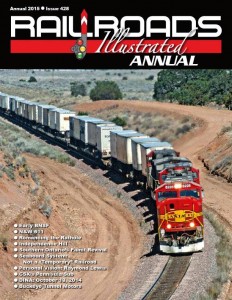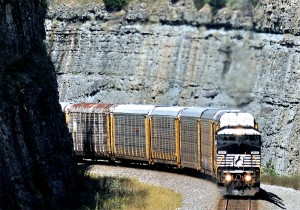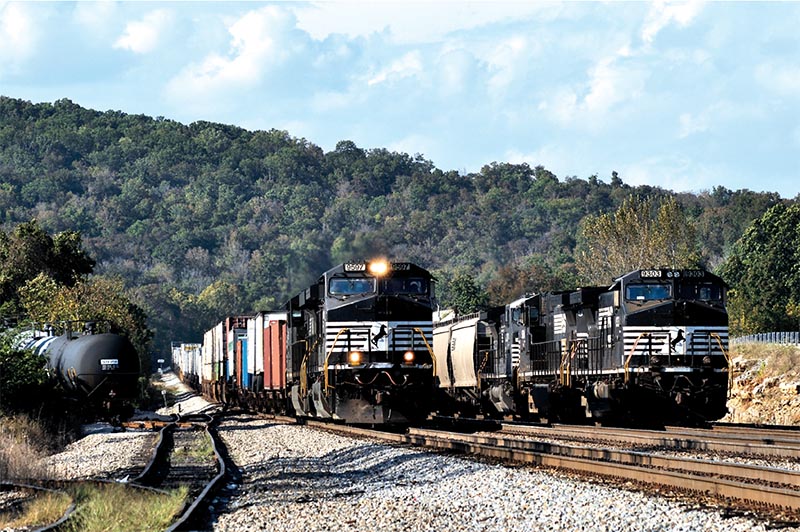 By Eric Miller/photos by the author
By Eric Miller/photos by the author
DATELINE: The rural, rolling hills of central Kentucky. On the fringes of the Bluegrass, far removed from the mountains and hollows of the eastern Kentucky coalfields, lies the Second District of the Cincinnati, New Orleans & Texas Pacific Railway — part of the massive Norfolk Southern system. The grandly named CNO&TP — part of the Thoroughbred’s Central Division — stretches from Cincinnati, Ohio, to Chattanooga, Tenn., and is divided into three districts. CNO&TP is the operating company for the Cincinnati Southern Railway, owned by the City of Cincinnati, and on long-term lease to Norfolk Southern.
The CNO&TP Second District, covering the line from Danville, Ky., to Oakdale, Tenn. is better known as the “Rathole.” Once riddled with tunnels, it was these notorious 27 smoke holes — along with extreme curvature and steep grades — that gave rise to the nickname used by railroaders and railfans even to this day. A monumental improvement project undertaken by Norfolk Southern predecessor Southern Railway in the early 1960s, including line relocations and incredible cuts, reduced the curves and grades and eliminated most of the tunnels.

With the massive cut framing the action, southbound Norfolk Southern autorack Train 275 works upgrade at Kings Mountain, Ky., on October 5, 2013. Eric Miller photo
I first visited these rails in the spring of 1991 as part of a railfan group’s day trip. I was immediately struck by the magnificence of the massive cuts, bisected and traversed by impossibly tall bridges that carried backwoods country roads across them. These cuts give the Rathole a decidedly unique and distinctive look. Heavy train traffic combined with awesome scenery made a lasting impression on me. Since that first encounter, I have returned to the Rathole at least once a year…
The article appears in the 2015 Railroads Illustrated Annual.


